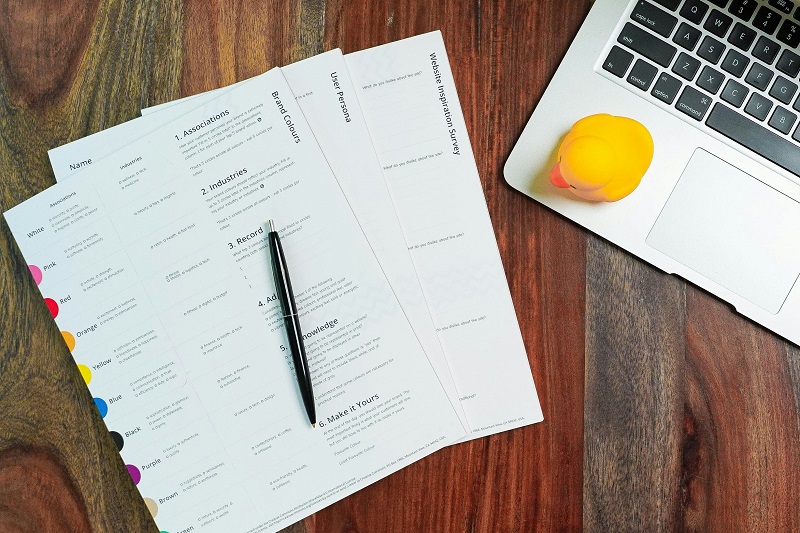- Manual paperwork drains time and energy that could be better spent on high-value tasks.
- Simple system upgrades and batching routines can reduce stress and increase consistency.
- Automation tools work best when paired with habits and workflows your team already uses.
- When paperwork fits naturally into your routine, it stops feeling like a burden.

Let’s be real—paperwork isn’t going anywhere. Even in an era ruled by cloud drives, productivity apps, and real-time collaboration tools, most offices still have a persistent pile of physical paper demanding attention. Contracts need signatures. Reports need to be reviewed. Memos need to be distributed. And despite our best digital intentions, it’s often quicker, clearer, or legally required to handle things the old-fashioned way.
But just because paperwork still exists doesn’t mean it has to take over your workday. If you’ve ever found yourself staying late to finish mailing invoices or manually folding newsletters while your to-do list grows, you’re not alone. The good news? There’s a smarter way to deal with it all—without making major changes to your existing workflow.
This isn’t about tossing out your printer or forcing everyone to go paperless. It’s about making peace with the paperwork and designing a system that keeps it from ruling your day.
The Real Cost of Manual Paperwork in Offices
Picture this: it’s 4:45 PM, your inbox is still a mess, and now you’re standing over the office table manually folding twenty quarterly reports for mailing. This isn’t an isolated scenario. Across industries, office staff spend surprising amounts of time dealing with repetitive paper-related tasks—tasks that don’t add value but eat into the work that does.
Here’s the problem. Manual paperwork eats up time in small, sneaky ways. A few minutes folding, a few more sorting, stapling, or sealing envelopes—it adds up. Over a week, that could be hours of lost productivity, especially in small offices where everyone wears multiple hats. And let’s not even get started on the fatigue factor. Repetitive manual tasks don’t just waste time—they drain energy and kill momentum.
There’s also a hidden opportunity cost. While you’re stuck managing printouts, you’re not brainstorming new ideas, responding to client needs, or improving processes. That delay in productivity creates a ripple effect. And unfortunately, many workplaces just accept this drag as “part of the job.”
But what if paperwork didn’t have to steal so much of your attention? What if the flow of physical documents could be integrated into your workday without causing friction—or frustration?
Streamlining Systems That Actually Work
The key to smoother paperwork isn’t to eliminate it. It’s to manage it better. And that starts with systems—small, intentional tools and practices that reduce effort without disrupting your workflow.
Think about the parts of your paperwork routine that feel the most draining. Is it folding dozens of letters for mailers? Sorting stacks of reports by department? Repackaging handouts for meetings? These are the moments ripe for improvement.
One popular approach some modern offices are adopting is the use of efficient paper folding machines for modern offices. These machines don’t just save time—they remove the most tedious parts of document prep from your to-do list. Instead of folding stacks of tri-fold brochures by hand, you’re free to focus on things that actually need your brainpower.
And it’s not just about machines. Streamlining also means creating smarter systems around the tools you already have. For example, organizing printing tasks in batches instead of trickling them throughout the day can reduce interruptions. Having clearly labeled trays or folders for “To Be Mailed” or “To Be Reviewed” documents keeps piles from forming on every flat surface in sight. Even assigning set times for paperwork (just like you would a meeting) can help keep the task under control.
Ultimately, the most effective systems are the ones that are simple, repeatable, and tailored to how your office actually works—not some idealized version of it. That’s what makes the difference between another unused “productivity hack” and something that quietly saves your team hours every week.
Small Changes That Make a Big Difference
When people think about improving their paperwork flow, they often imagine it requires a full-blown system overhaul—new software, new machines, and endless training sessions. But in reality, some of the most effective improvements come from small, almost invisible tweaks that just make your day smoother.
Start with the tools you’re already using. Something as simple as setting your printer defaults to double-sided can save paper and reduce bulk. Creating reusable templates for frequently used documents—like cover letters, internal memos, or reports—can shave minutes off tasks you repeat weekly. That time adds up fast.
You can also take a look at when paperwork is getting done. Is it scattered throughout the day, constantly interrupting deeper work? Or is it grouped into a focused session, where it gets knocked out efficiently? Something as simple as assigning a specific 30-minute window a few times a week to handle document-related tasks can bring structure where there used to be chaos.
There’s also the underrated power of visual organization. Labeled folders, color-coded trays, and a clear “to-do” space can bring order without requiring a new app or a company-wide memo. When everyone knows where to put things—and where to find them—you instantly remove a layer of confusion.
Small changes may not feel revolutionary, but they’re often the gateway to bigger cultural shifts in an office. They build momentum. They reinforce the idea that smoother systems are possible. And when paperwork stops feeling like a constant fire to put out, people show up with more energy and focus for the things that really matter.
When Automation Meets Simplicity
Automation gets a lot of hype—and rightly so—but it only works when it serves the actual flow of your office. The best automation doesn’t scream for attention. It just quietly makes your day better.
Think about the areas where you repeat the same process over and over. Maybe it’s folding and packaging customer letters, preparing documents for client meetings, or distributing internal reports. These are prime candidates for low-key automation that doesn’t require a tech degree to manage.
Devices like folder inserters, automated sealers, or even label printers might seem like “nice to haves,” but they often turn into essential tools once they’re in place. They take the mental load off repetitive tasks and free up your time for the decisions and interactions that actually move your business forward.
But automation isn’t just about hardware. It’s also about building predictable workflows. If everyone knows what happens to a document from the moment it’s printed to the moment it’s filed, things don’t slip through the cracks. Documents stop vanishing into desk piles. Mailings stop going out late. And you stop wasting time tracking down a piece of paper that should’ve already been handled.
What really works is a balance—a workflow that blends simple human systems with quiet automation in a way that’s easy to maintain. No unnecessary apps. No overcomplicated solutions. Just the right tools, working with the right habits.
When you hit that balance, something shifts. Paperwork goes from being a dreaded part of the day to a background process. It gets done without stealing your focus, your patience, or your entire afternoon.
Turning Office Paperwork Into a Non-Issue
What if paperwork wasn’t something you had to manage at all? What if it just… happened?
That’s not as unrealistic as it sounds. When your systems are built to support the flow of paper without creating friction, paperwork becomes almost invisible. It doesn’t pile up. It doesn’t cause panic at 4:30 PM. It simply fits into the rhythm of the day.
You’ll know you’ve reached this point when handling physical documents feels like just another task—like answering an email or grabbing a coffee. It’s quick. It’s predictable. It doesn’t throw off your whole schedule.
This shift isn’t about perfection. It’s about creating a workplace where the small, repetitive stuff doesn’t dominate your energy or attention. Where teams can focus on client work, creativity, strategy—whatever it is they’re actually paid to do.
And while no system is ever completely hands-off, a well-thought-out approach to handling paperwork means you spend less time reacting and more time running the show. You’re not avoiding the paper—you’re just not letting it run your day anymore.
Conclusion
Paperwork used to be synonymous with stress. Piles on desks, printers jamming, last-minute scrambles before a deadline. But it doesn’t have to be that way.
The truth is, when you step back and design smarter systems—systems that respect your time and reflect the way your office actually works—paperwork becomes manageable. Maybe even effortless. What once felt like a time-sucking chore turns into a smooth, background process that supports your day instead of hijacking it.
It’s not about going paperless or bringing in every new gadget. It’s about flow. And when your paperwork flows with your workflow, everything else gets easier.










Leave a Reply